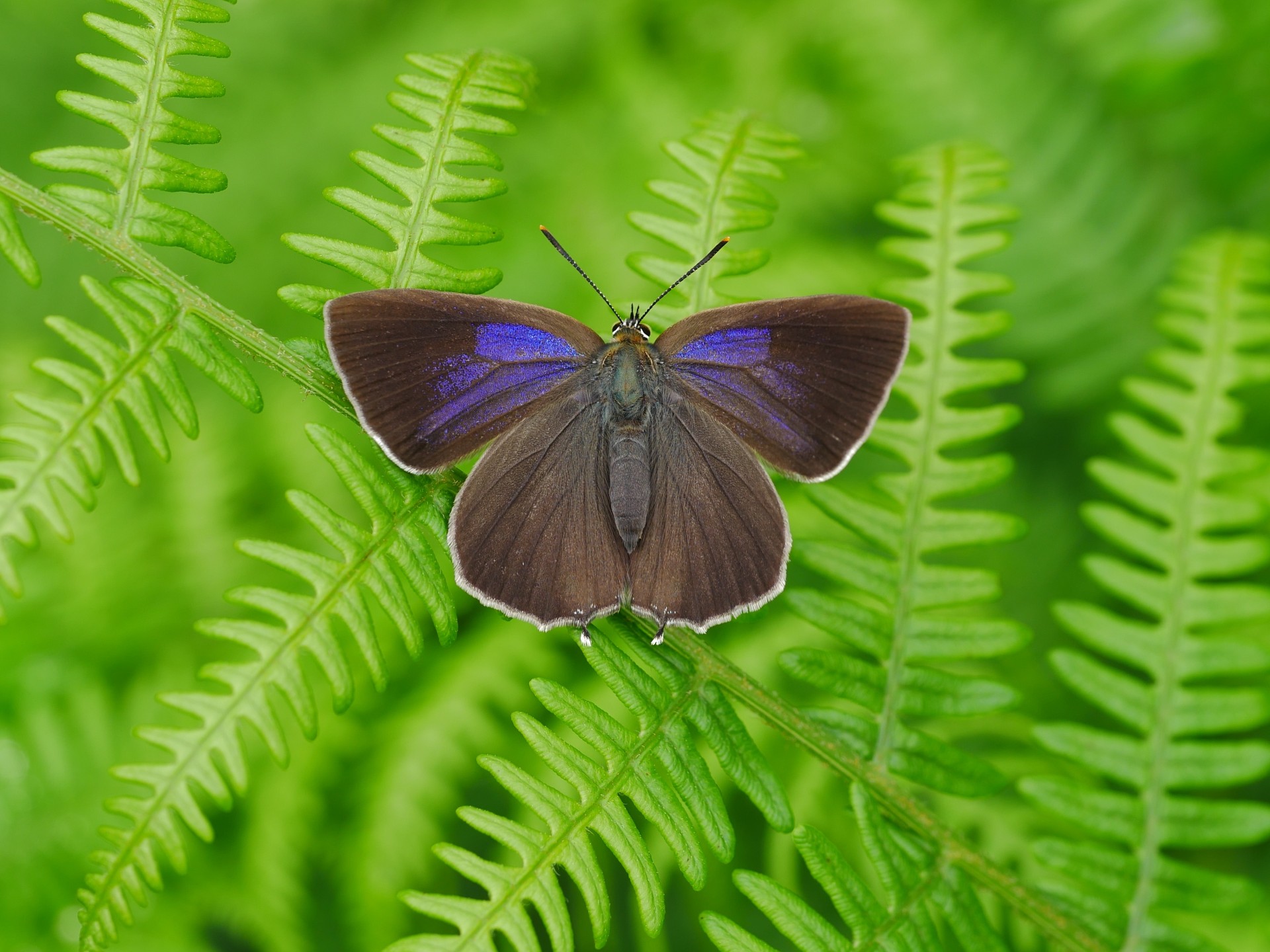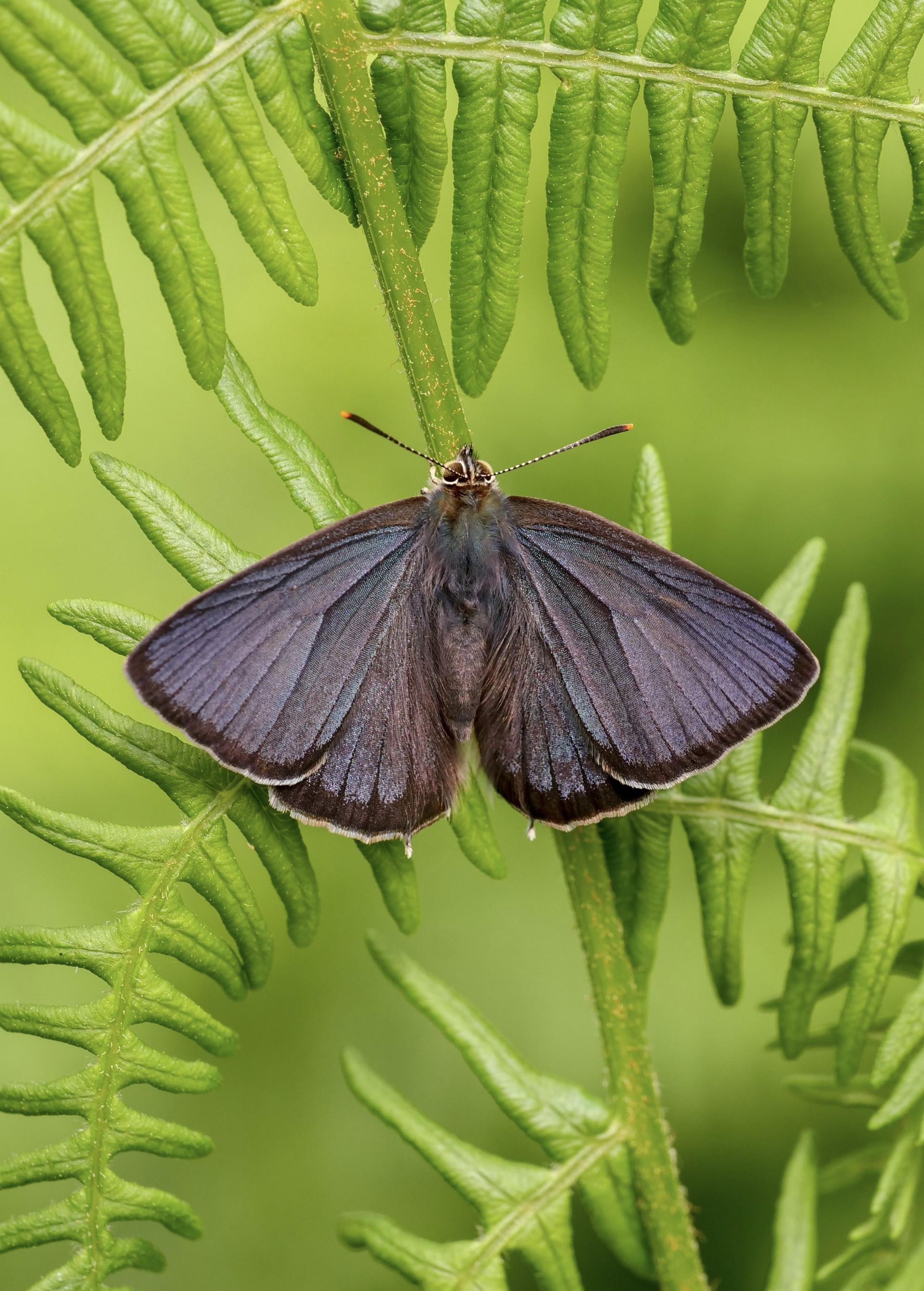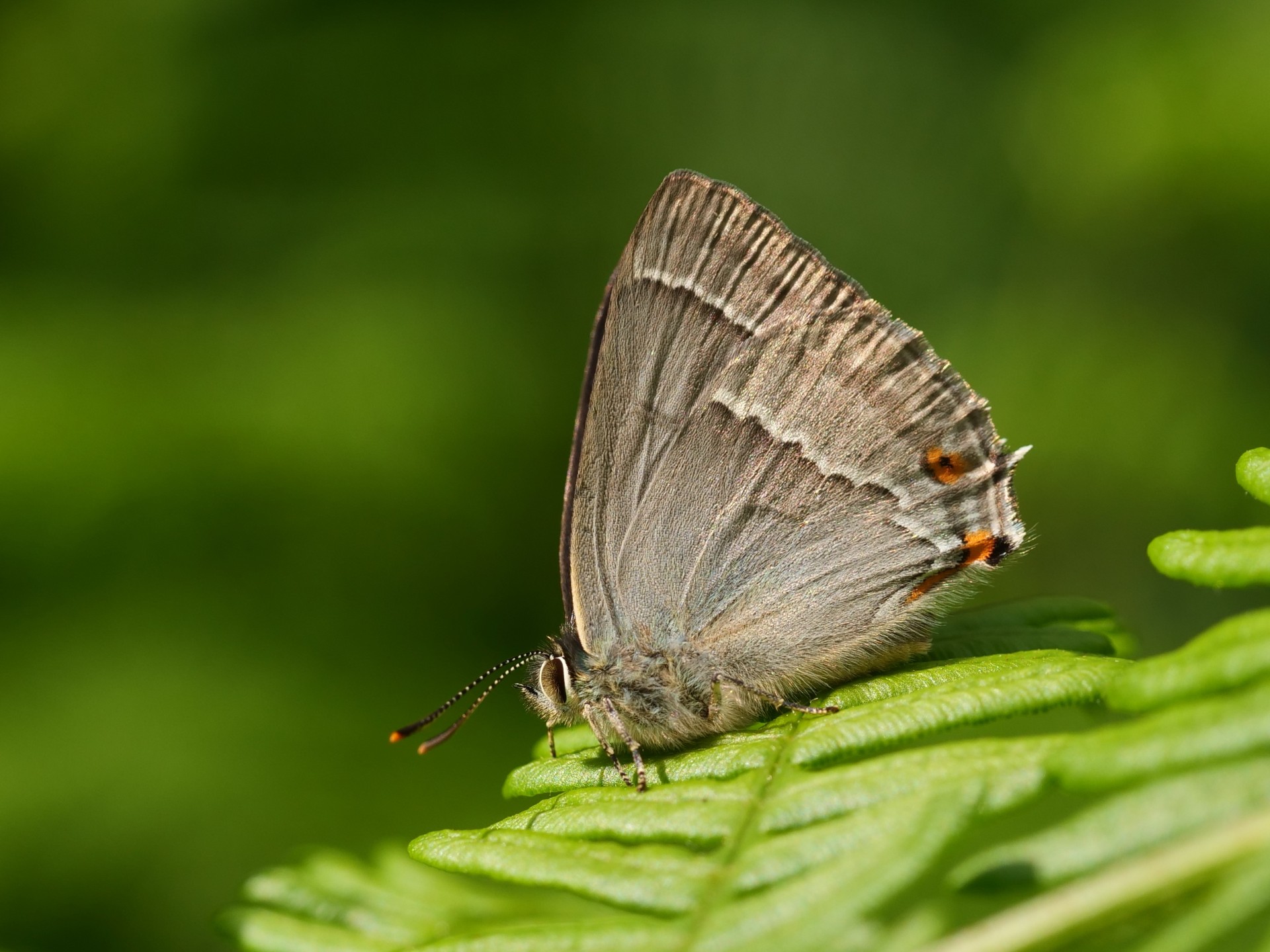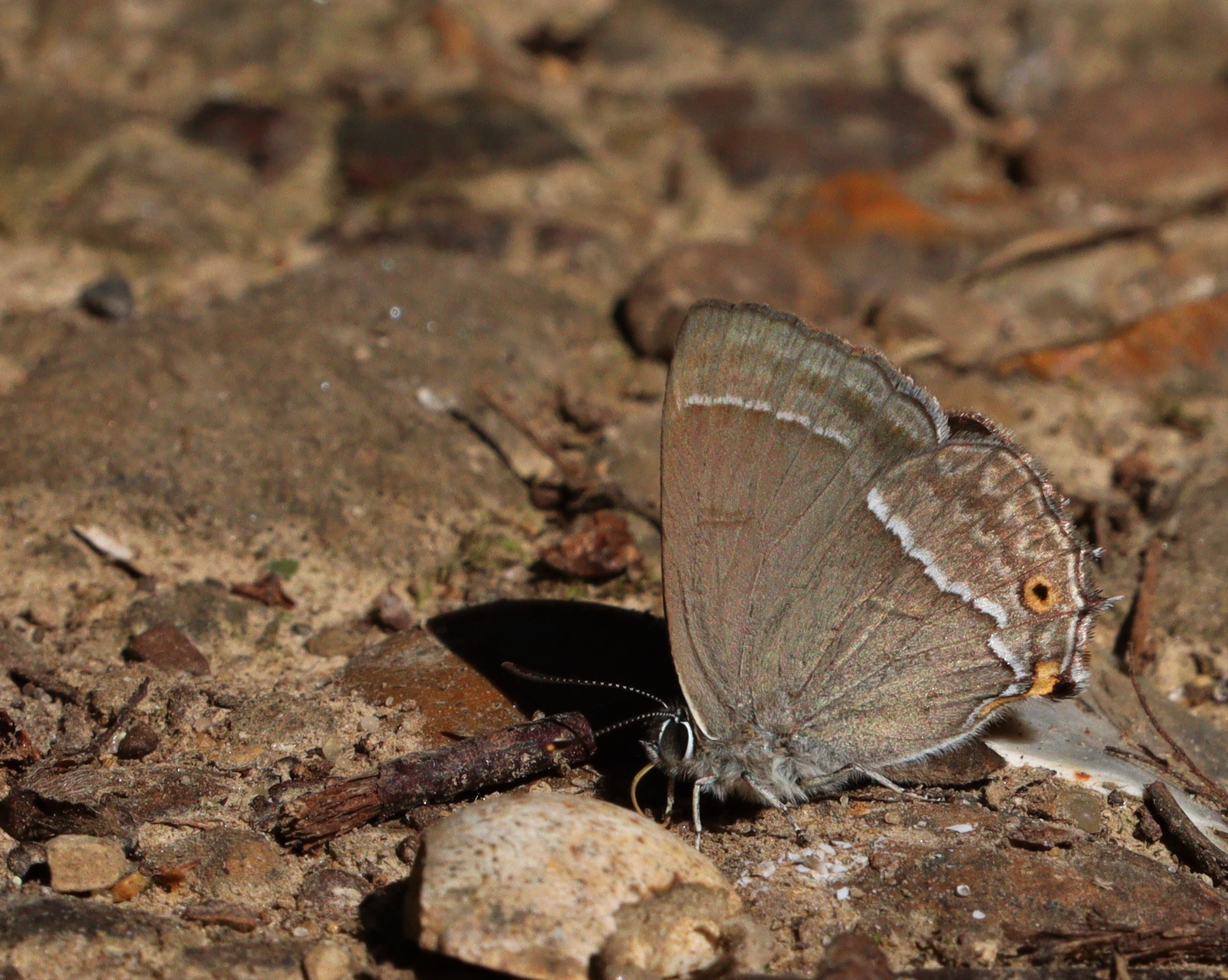
Favonius quercus
This is a relatively common butterfly but one that is easily over-looked, as this species spends most of its life high up in the canopy of Oak trees. Whilst these hairstreaks can be seen at any time of the day, they are most active in the evening between 6:00pm and 8:00pm, when other butterfly species have long since gone to roost. They mostly feed on honeydew, but they do occasionally come down to ground level where they feed on whatever nectar happens to be available, including Wild Privet, Hemp Agrimony, Cow Parsley and various thistles.
It is a relatively straightforward ID as no other British hairstreak species have uppersides that are blue or purple. On the undersides, there is a distinctive orange-spot next to a short tail.
There is one generation a year, the first adults usually emerging in the third week of June, with a peak in numbers in late June/early July. This species can be seen flying throughout all of August, with a few stragglers surviving into September.
Any mature Oak tree in Sussex is quite likely to host a few Purple Hairstreaks but on the Knepp Estate they are very easy to see in good numbers, between TQ141213 and TQ134193.

Female Purple Hairstreak resting on Bracken – photo by David Cook

Male resting on Bracken – photo by David Cook
.JPG)
A “distant view” of one feeding on Cow Parsley – photo by Martin Kalaher
.JPG)
Hiding in the vegetation – photo by Dave Brown

Side view of an individual, resting on Bracken – photo by David Cook

On the ground, taking in salts and minerals – photo by Dave Brown
Butterfly Conservation Purple Hairstreak